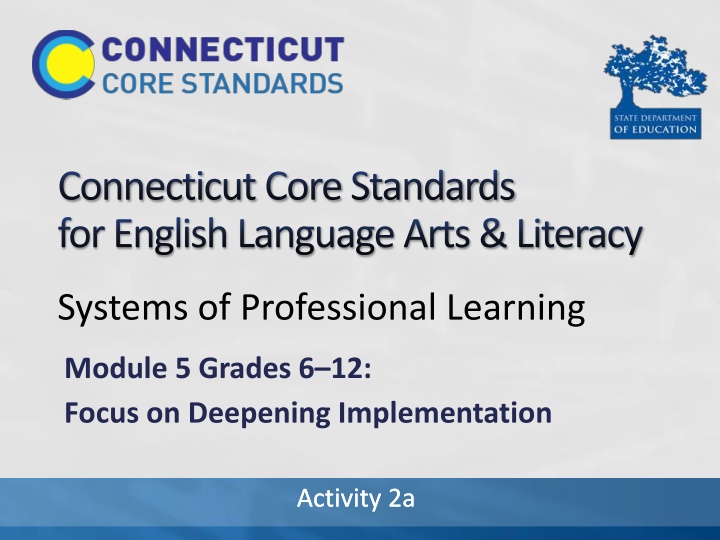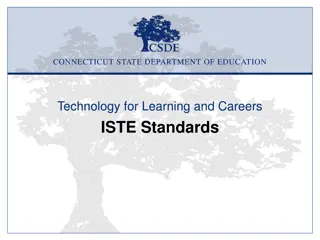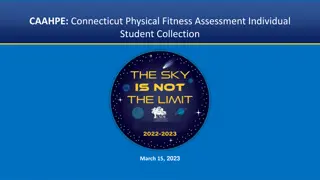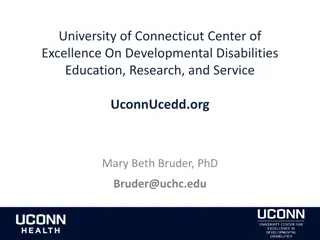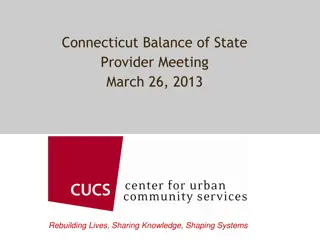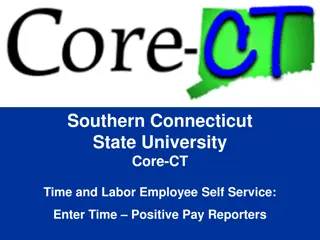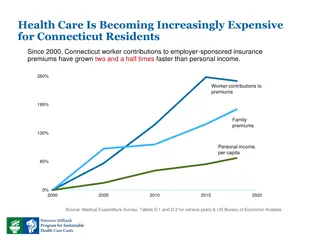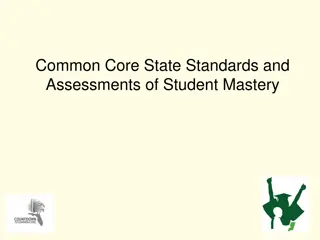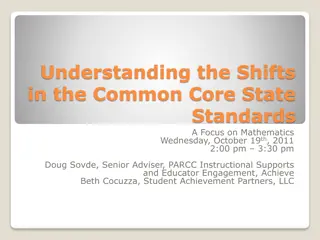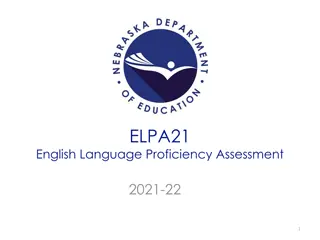Deepening Implementation of Connecticut Core Standards for English Language Arts & Literacy
This content focuses on supporting teachers in the change process to implement the Common Core State Standards effectively. It discusses the challenges of change, strategies for implementing change, and lessons learned from previous experiences.
Download Presentation

Please find below an Image/Link to download the presentation.
The content on the website is provided AS IS for your information and personal use only. It may not be sold, licensed, or shared on other websites without obtaining consent from the author.If you encounter any issues during the download, it is possible that the publisher has removed the file from their server.
You are allowed to download the files provided on this website for personal or commercial use, subject to the condition that they are used lawfully. All files are the property of their respective owners.
The content on the website is provided AS IS for your information and personal use only. It may not be sold, licensed, or shared on other websites without obtaining consent from the author.
E N D
Presentation Transcript
Connecticut Core Standards for English Language Arts & Literacy Systems of Professional Learning Module 5 Grades 6 12: Focus on Deepening Implementation Activity 2a Activity 2a
Todays Session CCS-ELA & Literacy Successes and Challenges Supporting Teachers in the Change Process EQuIP Quality Review Rubric Collaborative Examination of Student Work Classroom Look Fors Reflection and Planning Activity 2a 16
Part 2 Supporting Teachers in the Change Process Page 8 17
The Challenge of Change A higher bar for students means a higher bar for our schools, which will have to make changes in how they approach teaching and learning. Implementation of the Common Core State Standards: A Transition Guide for School-level Leaders (2013) http://www.aspendrl.org Activity 2a 18
Implementing Change Activity 2a 19
Why Change is Challenging Change is Learning Change is a Process, Not an Event Organizations Adopt Change; Individuals Implement Change Facilitating Change is a Team Effort Hall and Hord (2011) Activity 2a 20
Eight Lessons from Change 1. People respond to change differently. It is emotional. 5. People never think they have enough resources. 6. People will often change superficially- for compliance at first. 2. Sometimes it is easier to follow than to lead change. 3. People think of change as a loss, rather than enhancing something they re doing. 7. People resist too many changes too fast. 8. It is often easier to maintain what is familiar than what has been changed. 4. People think of change as something they have to do alone. Adapted from: Biological Sciences Curriculum Study (2013). Teaching Math for Learning: The Change Process. Colorado Springs, CO. Activity 2a 21
Moving the Vision into Practice These expectations [CCSS] necessitate robust professional learning experiences and systems for teachers that prioritize the CCSS and include high- quality content, multiple delivery modes (such as workshops, feedback systems, and coaching), and enhanced opportunities for teachers to collaborate and reflect as they look at student work, plan for instruction, and observe each other. Aspen Institute (2013) Activity 2a 22
Concerns-Based Adoption Model (CBAM) for Change in Schools Enhances leadership s ability to better understand, lead, and facilitate change Research- based framework for thinking through change in education Prompts leaders to design a process for change Provides tools and techniques for the initiative Provides for sharing of best practices Activity 2a 23
Concerns-Based Adoption Model (CBAM) Innovation Configuration Clear, shared descriptions of new program Focus on Key components Helps teachers understand expectations Stages of Concern For success of initiative, critical to address concerns of implementers Staff respond to change in many ways Provide targeted support based on stage of concern Levels of Use Determines extent to which a program/innovation is being used Determines level of expertise in program use Activity 2a 24
Stages of Concern 6 Refocusing Impact How can I refine and enhance? 5 Collaboration How can I share and see others? 4 Consequence Is this working? How can I do it better? Task 3 Management Can I fit it in with everything else? But 2 Personal How will it affect me? Self 1 Informational How do I do it? 0 Unconcerned What is it and why should I do it? Activity 2a 25
Activity 2: Supporting Teachers in the Change Process Activity 2a: Supporting Teachers in Making the Change to CCS-aligned Instruction 1.Read Supporting Staff through the Stages of Concern Continuum. 2.Using the Stages of Concern Continuum, read the scenario about a fictional teacher. 3.With a partner, determine where this teacher is on the continuum. 4.In table groups, consider what support this teacher will need to move forward. 5.Using the Stages of Concern Continuum with an explanation for each stage, discuss: a.How do teachers concerns change as they move through the change process? b.How can the questions teachers ask provide information for coaches? c. How do teachers attitudes change as they become more familiar with knowledge and practices involved in a change? Pages 8-11 Activity 2a 26
Essential Skills for CT Core Coaches Increasing Capacity in Implementing CCS Active Listening Thoughtful and Reflective Questioning Providing Effective Feedback Building Relationships Activity 2a 27
Increasing Capacity Foster a safe environment that encourages risk taking and implementation of new processes and approaches Provide opportunities to develop, practice, and reflect Demonstrate sensitivity to individual needs and differences Practice gradual release: model, provide support and feedback, encourage independent use Recognize and celebrate success Activity 2a 28
Active Listening Promoting a spirit of inquiry Pausing Paraphrasing Probing Putting ideas on the table Paying attention to self and others Presuming positive intentions from Seven Norms of Collaboration http://www.thinkingcollaborative.com/norms-collaboration-toolkit/ Activity 2a 29
Assessing Your Active Listening Skills Think-Pair-Share 1. Read the Seven Norms of Collaboration. 2. Select one that you do well, and one that you would like to improve upon. 3. Pair with a neighbor and explain the norm that you do well and give an example, as well as the one you would like to improve upon. 4. Discuss with your table: Are there commonalities among your choices? Page 12 Activity 2a 30
